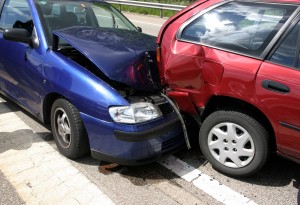Understanding the Difference Between Total Loss and Salvage Vehicles
 Nowhere is the difference between “knowing” something and “understanding” something more evident than when it comes to the relationship between “totaling a vehicle” for insurance purposes and the concept of salvage vehicles under state law. Everybody knows what it means to “total” a vehicle. But very few people actually understand the relationship between a totaled vehicle and state law regarding when such a vehicle can be titled and driven on public roads. Because these concepts play a key role in understanding collision losses and subsequent subrogation efforts, we pull back the curtains on these mystical terms in this article.
Nowhere is the difference between “knowing” something and “understanding” something more evident than when it comes to the relationship between “totaling a vehicle” for insurance purposes and the concept of salvage vehicles under state law. Everybody knows what it means to “total” a vehicle. But very few people actually understand the relationship between a totaled vehicle and state law regarding when such a vehicle can be titled and driven on public roads. Because these concepts play a key role in understanding collision losses and subsequent subrogation efforts, we pull back the curtains on these mystical terms in this article.
On April 2, 2021, Iowa Gov. Kim Reynolds signed Senate File 230 into law, increasing the damage threshold requirement for a salvage title to 70% of fair market value. This was considered a victory for the Iowa Collision Repair Association, the Iowa Insurance Institute, and the American Property Casualty Insurance Association, whose members coalesced in a rare moment of cooperation between insurers and the repair industry. Repair shops were losing money because so many vehicles were being “totaled.” The previous law defined a “wrecked or salvage vehicle” as one “for which the cost of repair exceeds 50% of the fair market value of the vehicle.”
When and whether a vehicle involved in a collision is considered “totaled” or a “total loss” for first-party insurance claim purposes or for purposes of handling salvage and branding titles of vehicles which are considered “salvage” are two different but related concepts within the insurance industry which are often conflated. A “total loss” is a function of the insurance policy and the particular insurance company’s practices regarding when to pay a total loss as opposed to paying for repairs to a damaged vehicle. A total loss is not instantly considered salvage and a consolidated reference to a “salvage/total loss vehicle” isn’t always an accurate one. The subject matter becomes even more complicated when you consider that there are 51 different jurisdictions which approach the subject in 51 different ways.
First-Party Total Loss Claims
 In insurance parlance, the phrase “Total Loss” in a first-party claim setting simply means that the cost of repairing a vehicle, plus projected supplements, projected diminished resale value, and projected rental costs, exceed the Actual Cash Value (ACV) of the pre-accident vehicle less the projected proceeds of selling the damaged vehicle for salvage. This is known as an “Economic Total Loss.” If the vehicle is badly damaged and beyond repair, it is known as a “Constructive Total Loss.” To determine the ACV of a vehicle, it is compared to similar vehicles being sold in the area, private databases such as Kelley Blue Book are referenced, or an appraiser is used. To that amount the insurance company sometimes adds sales tax, title, and registration fees. Insurance companies sometimes have their own formulas for determining when to “total” a vehicle. Some do so if a vehicle’s repairs are found to be at 51% of the vehicle’s value, and others use a figure as high as 80%. Much depends on the language of the insurance policy involved. For example, typical language found in an auto insurance policy under Part D – Coverage For Damage To Your Auto, might read as follows:
In insurance parlance, the phrase “Total Loss” in a first-party claim setting simply means that the cost of repairing a vehicle, plus projected supplements, projected diminished resale value, and projected rental costs, exceed the Actual Cash Value (ACV) of the pre-accident vehicle less the projected proceeds of selling the damaged vehicle for salvage. This is known as an “Economic Total Loss.” If the vehicle is badly damaged and beyond repair, it is known as a “Constructive Total Loss.” To determine the ACV of a vehicle, it is compared to similar vehicles being sold in the area, private databases such as Kelley Blue Book are referenced, or an appraiser is used. To that amount the insurance company sometimes adds sales tax, title, and registration fees. Insurance companies sometimes have their own formulas for determining when to “total” a vehicle. Some do so if a vehicle’s repairs are found to be at 51% of the vehicle’s value, and others use a figure as high as 80%. Much depends on the language of the insurance policy involved. For example, typical language found in an auto insurance policy under Part D – Coverage For Damage To Your Auto, might read as follows:
Our limit of liability for loss will be the lesser of the:
- Actual cash value of the stolen or damaged property;
- Amount necessary to repair or replace the property with other of like kind and quality; or
- Amount stated in the Declarations of this policy.
Another example of policy language regarding total losses is as follows:
We will pay the cost to physically repair the auto or any of its parts up to the actual cash value of the auto or any of its parts at the time of the collision. The most we will pay will be either the actual cash value of the auto or the cost to physically repair the auto, whichever is less. We will, at our option, repair the auto, repair or replace any of its parts, or declare the auto a total loss. If, the repair of a damaged part will impair the operational safety of the auto, we will replace the part.
Therefore, the policy language of a typical policy will usually allow the insurer to consider a vehicle to be a “total loss” if:
- The damage to the vehicle is so severe that it can’t be repaired safely;
- The repairs will exceed the value of the vehicle itself, or
- The amount of damage is so severe that state regulations require the vehicle to be declared a total loss.
The insurance company will then pay its insured the ACV of the vehicle, plus applicable state fees and taxes, if provided for in the policy language, less any deductible owed. (Note: A chart entitled “Recovery of Sales Tax After Vehicle Total Loss In All 50 States” can be found HERE.) The policy language usually dictates what is owed. If the vehicle is owned free and clear, the payment is made to the insured. If the vehicle is leased, the leasing company is usually paid. If the vehicle is financed and the lender is listed on the policy or on the title, the financing company is usually paid first.
Typically, cars are “totaled” when the cost to repair the vehicle is higher than the ACV of the vehicle. However, it is not always practical to repair a vehicle, even if the cost of repair is less than its ACV. A vehicle worth $4,000 requiring $3,000 in repairs might be considered “totaled” by an insurer even though the cost of repair is less than its value before the accident. In the case of Iowa, if a car requires a salvage vehicle with repairs at 50% of fair market value, the onus and stigma of obtaining a salvage title usually results in the insurance company treating such claims as total losses anyway. Insurance companies will typically consider such a vehicle to be a total loss, even though the repairs are only 75% of ACV or pre-damage value, or if the vehicle is stolen and not recovered. The damage threshold varies from company to company. An insurer will usually take possession of a totaled vehicle and obtain its title. If the owner is okay with the carrier totaling the vehicle but still wants to keep the vehicle, the carrier will pay its insured the ACV of the vehicle, minus any deductible that is due and the amount the vehicle could have been sold for at a salvage yard. It then will be up to the insured to make repairs and take care of any title issues. Many states like Iowa do not have a statutory correlation between “total loss” claims and “salvage title” requirements. However, in many instances the two do go hand-in-hand because the fact that state law requires a damaged vehicle to obtain a salvage title if repaired often means an insurer will “total” the vehicle anyway.
Total Loss Thresholds, Vehicle Title Branding, and Resale of Salvage Vehicles
 A “total loss” is a function of the insurance policy and a particular insurance company’s practices regarding when they declare a vehicle a total loss as opposed to paying to repair it. A “total loss” is not automatically considered salvage. Every state has its own title-branding laws and requirements and some of them leave it up the insurance company. The issue of “total loss” of a vehicle discussed above often goes hand-in-hand with a state’s salvage/vehicle title branding laws and the two concepts are often conflated. When a vehicle is declared a total loss, the insurance company usually takes ownership of the vehicle. The title is transferred into the insurance company’s name, and it then sells the vehicle to a salvage dealer, who in turn sells it to a parts yards or a recycler. On occasion, the insured may want to keep the salvage vehicle for sentimental or financial reasons. In that case, the insurance company pays the insured the ACV less the deductible and salvage value of the vehicle. Some states have salvage laws which prevent an insured from keeping a total loss vehicle. If the insured keeps the salvage vehicle, it should not be removed from the insurance policy until a rental vehicle is no longer being used and the vehicle is no longer registered in the insured’s name. Many “totaled” vehicles are repaired and sold to the public after they are “totaled.” Insurance companies are required to declare a car totaled and apply for a salvage title once damage reaches a certain point under a state’s law.
A “total loss” is a function of the insurance policy and a particular insurance company’s practices regarding when they declare a vehicle a total loss as opposed to paying to repair it. A “total loss” is not automatically considered salvage. Every state has its own title-branding laws and requirements and some of them leave it up the insurance company. The issue of “total loss” of a vehicle discussed above often goes hand-in-hand with a state’s salvage/vehicle title branding laws and the two concepts are often conflated. When a vehicle is declared a total loss, the insurance company usually takes ownership of the vehicle. The title is transferred into the insurance company’s name, and it then sells the vehicle to a salvage dealer, who in turn sells it to a parts yards or a recycler. On occasion, the insured may want to keep the salvage vehicle for sentimental or financial reasons. In that case, the insurance company pays the insured the ACV less the deductible and salvage value of the vehicle. Some states have salvage laws which prevent an insured from keeping a total loss vehicle. If the insured keeps the salvage vehicle, it should not be removed from the insurance policy until a rental vehicle is no longer being used and the vehicle is no longer registered in the insured’s name. Many “totaled” vehicles are repaired and sold to the public after they are “totaled.” Insurance companies are required to declare a car totaled and apply for a salvage title once damage reaches a certain point under a state’s law.
Salvage laws help the public know what it is paying for when it buys a salvaged vehicle. The definition of a “salvage vehicle” differs from state to state. Generally, however, a salvage vehicle is one that has been in some sort of accident or had damage occur and has been declared a total loss due to that damage at some point in its history. It could also be as simple as a vehicle which was stolen and not recovered in a specified period of time. Often, it’s not clear who has to declare the vehicle a total loss (the insurance company or the state, as in Minnesota, which has a “total loss” definition). Therefore, what qualifies as a salvage vehicle varies from state to state, but often overlaps with a “total loss” label from either the state or an insurer.
Title-Washed Vehicles
Depending on the type and extent of damage, the salvage buyers will occasionally have these cars repaired and will then attempt to sell them as a running vehicle. When insurance companies write off a vehicle as a “total loss”, the law in most states requires the vehicle’s title of ownership to be given a “brand.” That brand permanently marks the car as damaged goods to all potential future owners, but there are ways for unscrupulous dealers to make the brand disappear. In the old days, it was literally done with chemicals. Today, photo-editing software and digital scanners are used to print new titles. There are no national titling laws. Cars can also simply be re-registered in different states until the brand falls away. According to the vehicle history provider CarFax, 800,000 cars in the U.S. — including at least 500 taxis — have been “title washed” to conceal their troubled histories.
Whether or not a vehicle is required to have a “salvage title” issued varies from state to state. In a small number of states, a salvage title is required if a vehicle is stolen and not recovered within 21 days. Arizona, Florida, Georgia, Illinois, Maryland, Minnesota, New Jersey, New Mexico, New York, Oklahoma, and Oregon use salvage titles to identify stolen vehicles. Not all total loss vehicles result in a DMV-reported branded title, however. For example, there will be no branded title if an insurance company’s definition of “total loss” is different from that of the DMV’s threshold requirement for a branded title, or when the owner of the vehicle is a self-insured company, such as a fleet or a rental car company.
Salvage vehicles which are repaired and the “salvage title” is removed or replaced with a “rebuilt salvage” brand so that a buyer knows that the vehicle has been purchased as salvage, repaired, passed an inspection, and has been deemed as safe to drive. While the procedure varies slightly from state to state, the insurance company will typically take ownership of the totaled vehicle (known as “salvage”) and may obtain a “salvage title” for the vehicle. After it pays it’s insured the pre-loss ACV of the vehicle and forwards the certificate of ownership, license plates, and a required fee to the Department of Motor Vehicle (DMV), the DMV then issues a Salvage Certificate for the vehicle. In some cases, the vehicle is repaired, re-registered with the DMV, and then classified as a “revived salvage” or “salvaged” vehicle. Of course, if the insured wants to keep the “totaled” vehicle, the insurance company will deduct the value of the salvage from the claim payment.
 The detailed laws and regulations regarding whether a vehicle is considered a total loss and what sort of branding or titling requirements follow, are in place in order to avoid fraud which often occurs when total loss vehicles do not get classified as salvage by insurers and other sellers or are not appropriately branded, and are not properly and swiftly reported into the appropriate state and federal databases by those entities, such as auto auctions that are handling the vehicles prior to their being offered for resale. Unscrupulous buyers of salvage vehicles often take advantage of an undocumented damage status to then offer these cars for resale to an unsuspecting public, including instances of title-skipping, where the seller – which in many cases is a major insurance company or salvage auction company, but also can include Internet focused “junk-my-car” solicitation companies, tow-to-acquire companies, charity organizations, and other companies that buy used and salvage vehicles from the public for resale – engages in a practice of title skipping to hide its part in the chain of ownership of the total loss vehicle.
The detailed laws and regulations regarding whether a vehicle is considered a total loss and what sort of branding or titling requirements follow, are in place in order to avoid fraud which often occurs when total loss vehicles do not get classified as salvage by insurers and other sellers or are not appropriately branded, and are not properly and swiftly reported into the appropriate state and federal databases by those entities, such as auto auctions that are handling the vehicles prior to their being offered for resale. Unscrupulous buyers of salvage vehicles often take advantage of an undocumented damage status to then offer these cars for resale to an unsuspecting public, including instances of title-skipping, where the seller – which in many cases is a major insurance company or salvage auction company, but also can include Internet focused “junk-my-car” solicitation companies, tow-to-acquire companies, charity organizations, and other companies that buy used and salvage vehicles from the public for resale – engages in a practice of title skipping to hide its part in the chain of ownership of the total loss vehicle.
In some states, such as Florida, if the vehicle is damaged to 80% of its pre-accident ACV, it is considered salvage vehicle. In other states, such as Minnesota, the vehicle becomes a salvage vehicle when the insurance company declares it to be a “total loss” and the vehicle is worth at least $5,000 and is less than six-years-old. This means that in some states, a vehicle worth less than $5,000 or older than six years cannot be deemed salvage, making those who buy vehicles which fit this description open to fraud and unsafe vehicles. In most states, vehicles which carry a salvage title may not be registered and driven on public roads. In order to resell the vehicle and operate it on the public roadways, the title must be “rebranded” with a “rebuilt salvage” brand.
The National Motor Vehicle Title Information System (NMVTIS) is a system that allows the titling agency to instantly and reliably verify the information on the paper title with the electronic data from the state that issued the title. NMVTIS is designed to protect consumers from fraud and unsafe vehicles and to keep stolen vehicles from being resold. Insurance carriers are required to provide NMVTIS with information on every salvage vehicle obtained, including total loss vehicles. The Department of Justice recognizes that many state laws have differing requirements and definitions of terms such as “salvage.” The NMVTIS requirements do not alter these state laws and the state laws do not prevail over federal definitions and requirements. However, as stated in the NMVTIS regulations, a determination of total loss under a state law will trigger the requirement for an insurance company to report a total loss vehicle. The information reported to NMVTIS is not required to be used by any future state that titles a vehicle included in an insurance carrier report.
Total Loss Threshold (TLT)
In determining whether a vehicle is subject to a state’s salvage title laws, insurance companies will calculate the Total Loss Ratio (cost of repairs/actual cash value) and then compare the resulting ratio/percentage to limits set and/or established by state law. The Total Loss Ratio is also sometimes referred to simply as the damage ratio. Some states have pre-determined percentages which dictate by law how high this damage ratio needs to be in order to be able to declare a vehicle a “total loss” and be eligible for a salvage title or certificate. This is referred to as the Total Loss Threshold (TLT). In order to total a vehicle, the damage ratio must exceed the state-established TLT percentage. States frequently dictate this TLT as part of legislating salvage titles and it varies from state to state. A car with damage totaling 75% of its value is totaled in New York, but considered repairable in Texas, where the threshold is 100%. As an example, in Wisconsin, § 342.065(1)(c) reads as follows:
(c) If the interest of an owner in a vehicle that is titled in this state is not transferred upon payment of an insurance claim that, including any deductible amounts, exceeds 70% of the fair market value of the vehicle, any insurer of the vehicle shall, within 30 days of payment of the insurance claim, notify the department in writing of the claim payment and that the vehicle meets the statutory definition of a salvage vehicle, in the manner and form prescribed by the department.
In addition, Wis. Stat. § 340.01(55g) provides the definition of a salvage vehicle: “Salvage vehicle” means a vehicle less than seven-years-old that is not precluded from subsequent registration and titling and that is damaged by collision or other occurrence to the extent that the estimate or actual cost, whichever is greater, of repairing the vehicle exceeds 70% of its fair market value.” Many states have exceptions to these rules for older vehicles which tend to complicate the issue.
When state law does not dictate a TLT, an insurance company must determine internally when a vehicle becomes a total loss. This means that the insurance company applies a Total Loss Formula (TLF), which is usually set forth in the policy and sometimes governed by state law. It should also be noted that in some TLT states, rental costs are also considered in determining whether a vehicle is a constructive total loss.
Total Loss Formula (TLF)
When a TLT is not dictated by the state, an insurance company might apply its own internal TLT or percentage, or simply default to something known as the Total Loss Formula (TLF). However, this internal TLF cannot be less than the TLT determined by state law. This TLF can be summarized or expressed as follows: Cost of Repair + Salvage Value > Actual Cash Value. If the sum of the first two quantities is greater than the ACV, the car can be declared a total loss. As an example, a damaged 2002 Toyota Echo with 185,000 miles in good condition has an ACV of approximately $2,800. Total repair costs are estimated at $2,000, for a damage ratio of 72%. This car would be considered a total loss in Arkansas, where the TLT is 70%, but not in Florida where the TLT is 80%. In Illinois, the TLF would be used and, if the salvage were worth $700, the car would not be totaled ($2,000 + $700 < $2,800). Of course, states utilizing the TLF rely on and defer to the judgment and opinions of licensed appraisers. In determining ACV, insurers often use data unavailable to the consumer. This information is often obtained through subscription to a private database of car values – the largest provider being CCC Information Services, used by the many of the top insurers across the country.
A chart depicting the laws of each state with regard to total loss thresholds, salvage titles, and the duty of an insurance company when obtaining title to unrepairable vehicles can be found HERE. For questions about auto property damage subrogation claims, contact Gary Wickert at gwickert@mwl-law.com.






